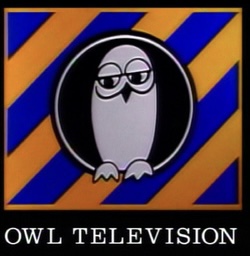TL;DR: its cheaper that way,
And i value that decision
I can bet you it’s incompetence. They failed upwards. Sure, protocol is great and universal, but connector is atrocious and it has nothing to do with cost. Few points in favor of this hypothesis:
- Plastic inside of the connector was initially black. Why chose hard to see color? Go with something easier to see;
- Connector is perfectly rectangular and only distinguishing feature they made hard to see. Don’t make ti symmetrical if it’s not reversible, basic design principle;
- Connector is perfectly rectangular making it difficult to insert. There’s a reason why most connectors have rounded corners, they are self-correcting, even TypeC does this;
- They made various different connector types but pushed for the only one with these issues. No one ever had doubts how type B or mini B or micro B go in.
Initially, the plastic inside the connector was white. They started to use black to denote USB2.0 devices, and USB2.0 rapidly became the standard. They at least tried to do something similar with blue plastic with USB3.0.
It’s basically the only example I can think of where the plug and socket are rotationally symmetrical without also being reversible. That’s the kind of thing where I ask “did you test this before you shipped it?” Thirty years later we’re still plagued by the damn thing.
Right you are. Completely forgot about that. That said, I don’t think USB1 was a standard for too long. If I remember correctly it went to 2.0 pretty fast.
If you had Macs, USB 1 was around a lot earlier, and really only good for peripherals and HID for a long time. FireWire and external SCSI drives were necessary because USB 1 wasn’t even viable for anything beyond external floppy drives. USB2 was a boon to external drives and bigger thumb drives, but took a while to arrive at the time.
Also a male USB 2 plug fits perfectly into a RJ45 slot :-/ In my days of tech support, I’ve seen multiple people plugging their USB printer cable into the network slot of their computer and it’s a perfect fit so they were always convinced they didn’t do anything wrong… That’s clearly a design flaw while all other connectors have distinct sizes.
Never heard of people plugging USB into LAN, but now that you mention it they are the same size. Luckily all the contacts are shielded.
I’ve done it myself when feeling the back of a pc and trying to get away without looking. I’ve been doing IT support since high school.
Way back before USB, joysticks had a DIN-25 connector that was identical to the
MIDInetwork connector.I blindly plugged my brand new MS Force Feedback joystick into the
MIDInetwork port behind my miditower (yes I’m that old) and watched the magic smoke rise out of the joystick. That was not a good day to learn about plugs. The network carries 50 volts or something. Stick wasn’t happy.edit: corrections! Here’s a photo of the network card: https://i.imgur.com/fBJixkM.png
Strange. I always thought they were the exact same port. Because most of the time you would need a sound card to plug in a joystick. And nowadays I can’t use my MS Force Feedback because all the USB adaptors don’t implement all of the MIDI stuff the joystick needs to run the force feedback.
Oh you are right, I misremembered: what actually happened was that I was indeed going for the MIDI port of my SoundBlaster card but found a matching socket in my networrk card!
I will update my comment to correct this.
My girlfriend works in IT at a school so I asked if she’s encountered this too. She said “all the time, they’re right next to each other” she also added that a lot of people put their thin charging cables into the headphone jack breaking their laptops. And that for some of them they “fit better” in that jack than the one it’s meant to go in.
You mean USB Type-B, right?
No one ever had doubts how type B or mini B or micro B go in.
I agree with most of your post, but micro B is a step too far. That fucking plug was always inserted with the following procedure:
- Try to plug it in.
- Flip the side and try to plug it in again.
- Flip it again because you had the right damn side the first time.
Always, always, always.
deleted by creator
Mini B was rated for something like 10x fewer insertion cycles than micro B, the retaining tabs would give out and the connector would fall off… or worse, twist and break the socket’s inner plastic bit.
For some reason I always had fewer problems (meaning none) with mini B breaking than with micro B or C breaking.
In my experience, Mini B was mostly used for data transfer, along with some other port to do the charging. Micro B got introduced as the “all in one” data+charging port. I’ve seen both kinds of ports break, but only the Mini B ones that were also used for charging; the data-only ones, were fine.
My conclusion is that charging ports use more insertion cycles and are more likely to break, and I keep magnetic charging adapters in all of them (as a side effect, twisting the cable or pulling at an angle just disconnects it, instead of breaking the port).
Well, if nothing else it’s easier to than type A.
No one ever had doubts how type B or mini B or micro B go in.
How lucky you were to never have a device that had one of these upside-down.
Or a printer with the B connector rotated 90° to one side.
New question: why did it have rotational symmetry?
Because fuck you that’s why
New question: Fuck me? 🥺
Cheaper. Any other questions?
Oversight
Considering the much higher cost of production then vs now, it makes complete sense. The economy of scale took care of that problem with time.
EXPLAIN!

The picture explains itself. The cable exists in a 4-dimensional space.
The reply is pretty self-explanatory too. The cable exists in a 4-dimensional space.
You guys joke about this, but he managed to create a connector with three sides: up, down, and “oh yeah the first side was the correct one”
It doesn’t necessarily need to be 4-dimensional https://en.m.wikipedia.org/wiki/Spinor
deleted by creator
Purged by creator
USB-A is a spin-half connector type
USB-A walked so USB-C could fly.
Usb-c gang
Naw, USB-A is much more secure. I plug that end into my power bank, throw it in a bag or my pocket, and it’ll disconnect maybe 1 time out of the 100 that the USB-C or Lightning end does. It is a little larger, though.
deleted by creator
I just wish they didn’t come with chips inside our cables.
You need that for power regulation. One of the reasons that you can use a USB-C lead with anything is because all of the devices that require different power will just tell the cable that and the chip inside the cable deals with it. Otherwise there would have to be different cables for different voltage requirements.
You don’t need it though. The power regulation is a decision between the load and the supply devices, the cable is an unnecessary third party. The cable should just be a multicore connection between two things, not a third device.
If I had to go out on a limb though, I’d say it’s because manufacturers were selling cheap cables that didn’t meet the specification, and people were using them with higher power devices, causing overheating. By including a chip in the spec for the cable, you can push some of the responsibility back towards the cable manufacturer, and they can limit the maximum current to whatever they’ve designed to. In which case, we already do have different cables for different voltages - if your cable isn’t rated for 100W, then it might force a lower power even if your device and charger can do 100W. However it would be better if cable manufacturers would just meet the basic design specification to begin with, rather than creating unnecessary overhead.
It doesn’t make any difference either it’s between the supply and the device or it’s between the cable and the device it’s still two devices.
By pushing the responsibility onto the cable it allows you to operate the cable directly from a USB port. So you can have things like electrical sockets with USB connections and you don’t have to have chips in the sockets, because typically they’re just dumb electrical interfaces. It also means that the device delivering the power doesn’t have to be actually fully switched on, so you can recharge your phone from a USB port on your computer and you don’t have to power the computer on. As long as there is an open electrical channel to the port the cable will deal with it all itself.
Also it’s more efficient because you would have to have a control circuit in every single power delivery device, but this way you can have it in just the one cable, so now it is one chip for an unlimited number of power delivery devices.
So you can have things like electrical sockets with USB connections and you don’t have to have chips in the sockets, because typically they’re just dumb electrical interfaces.
If the supply is dumb and cannot negotiate power, then there is no need to negotiate power and it will fall back on regular 5V USB. The same if the load is dumb. In this case, there is no need for a cable chip.
It also means that the device delivering the power doesn’t have to be actually fully switched on, so you can recharge your phone from a USB port on your computer and you don’t have to power the computer on.
If the USB port has power to it, the computer is supplying it. The voltage would be on but open circuit. The computer would not have to supply the negotiation circuitry until a cable has been connected end to end and the voltage circuit is closed.
You’re trying to present this as the cable replacing one of the devices, but it doesn’t, it’s an extra 3rd device in the negotiation. All 3 devices must permit a certain charging level for that level to be used. It may have some benefit in ensuring that cable load capacity isn’t exceeded, but like I say it would be far better if the cables were reliably manufactured properly to handle the specified loads.
The cable has to carry the negotiated power safely. It’s not unnecessary, it’s absolutely critical. I’ve personally seen and diagnosed the result of when this fails.
For your low power applications there is no need and the spec allows for that.
It wouldn’t be critical if the cables were suitably rated for the specification. If you put a 0.5A cable in a 3A circuit, you’re gonna have a bad time. If you use a 3A or better cable, then you don’t need a cable chip to tell the actual devices to only work at 0.5A.
How do you have the cable correctly identify itself if you don’t put some smarts in it? Or are you saying we should only be able to buy expensive cables fully rated for 100W (or higher as the spec has been updated) — and how do you prevent an older cable rated for 100W from being abused in a newer 200W circuit?
Divider resistors are okay, but the IC is a better choice for future proofing and reliability.
A chip can literally just contain basic logic gates. Your aversion to them is based on pure Qanon fiction
“But what if they start putting fries in my ports? I can’t have fries without any ketchup!”
My aversion to them is an aversion to unnecessary overhead. A cable is a cable, it shouldn’t be a third device.
No, the chip is a microcontroller with firmware. You can try to do it in pure logic but it’s a waste of effort and development resources.
Bill gates already put chips in my vaccines
Was it doritos? I hope it was doritos.
Spicy nacho cheese baby
Somewhat understandable, but they could’ve also done something like HDMI and DisplayPort and gone with a shape that could only plug in one way. It might not have been “as cheap as possible” but probably not as much added expense as the extra wiring and stuff. (maybe, idk shit about manufacturing)
Removed by mod
The problem there is at least as much from how hard it is to twist the cables as it is from the connector shape. The asymmetric connector is still better than nothing.
I can think of some examples of asymmetric connectors that work great: mini USB; North American 3-prong power plugs; old school PC video, serial, and game ports; original NES controller connections, etc.
I really wish hdmi was symmetrical. (Peer behind tv, “which way goes up?” Tries to plug it in, “fml it was the other way” flips it drops it)
I wish too, mainly because HDMI cables are much less flexible and twisting them 180° can create tension.
Unfortunately HDMI already uses pins on both sides of the connector, so you would have to shrink them to half their size first, then double them.
That is unfortunate. Too bad there is no standard as to which side is the top.
Not all asymmetric port designs are good. SCART was capable – HDMI of the 1990s-2000s – but you cannot really feel where one ends and another begins with 2-3 of them in the rear of almost every TV and VCR sold in Europe back then. They carried flawless RGB video, two-way composite A/V, remote control signals etc. However, they were bulky (why 21 individually shielded wires instead of twisted pairs?), expensive and got loose easily. This was before digital technology that enabled error correction and multiplexing.
It’s not an issue of not being reversible. The problem is that it is symmetrical without being reversible. HDMI and DisplayPort are much less annoying. Even USB Type B (printer cables) is relatively easy to figure out orientation for.
So micro and mini usb are superior!
Mini is fine. Micro is very close to being symmetrical that it might as well be. For cables that small, reversible is the way to go.
My biggest problem with those was that mini didn’t have a strong enough friction fit and would become loose easily, and micro would wear down and break so easily. Luckily it seems that USB C has all the right qualities. It’s symmetrical but reversible, it’s durable, it clicks into place well, and it’s form works well on desktop, laptop, and mobile equally.
I actually think that a big part of the problem isn’t reversibility or symmetricality, it’s that that the ports themselves are not designed in a way that easily accepts the cable blind, and I think the best example of the way it should be is probably the SCOMP link. Or for those of that aren’t super nerds, the star wars connector that R2 uses to stop the trash compactor, amongst other things.
Look at that thing. R2 could be stumbling around drunk after a weekend droid bender and still find the target. Now, I’m not saying that it should be that large, but imagine fi the receiving port had a 1-2mm meniscus like curve that allowed you to find the target more easily, especially combined with a modern cable like USB-C. If we just look at the physical shape of the connectors, I think Lightning actually got this more correct than just about anyone else - look at a Lightning connector, and the male end has a very small curve on the sides of the connector to make it easier to actually get into the port. The female end also has a very subtle version of the thing I’m talking about.
I think a real life connector should have a slightly more prominent version of this, especially if it’s going to be the one connector for literally everything. Like, plugging into the back of a monitor or PC you can’t quite reach or TV or something should be an easy no-look operation. I’ve ton tech support for decades, and there is basically no connector that doesn’t absolutely suck shit to try to plug in if you can’t actually see it. I want to be able to throw it from across the room and still have it stick though.
For more on this topic, buy a coffee in a DT in a place that has to hold the reader out for you. Your dumb meat body is holding the card and moving slightly, the dumb meat body of the person taking the payment is moving slightly, so you end up try to jam the chip in a way that makes you both feel like you have a stack of learning disabilities. It’s just bad design.
So a headphone cable?
Honesty, kinda? There are challenges to the connector when you introduce more connections than just tip-ring-sleeve, but the general vibe of it is pretty close.
they should just go with perfectly circular, with different sizes for different applications. imagine a 20mm unit - high power/bandwidth hoses with a satisfying locking mechanism that magnetically seals the connection.
and makes the proton pack sound. and rgb fuck nevermind go back this was a bad idea
Circular isn’t a great idea, and here are most of the idea why it is not : https://electronics.stackexchange.com/questions/528821/why-dont-we-have-a-circular-usb-port
USB required to have a stable connexion, as it’s a digital signal and not an analog as jack ports, which just sends curent through it. Rotating the connector could maybe introduce issues for signal integrity.
The usb connector has much more connectors than a jack port. It would take a very long hole to fit them all. (usb 3+, usb C…)
Size constraint. USB C is flat, a round port is not. So it’s bigger in 1 way, but smaller in the other, and so creates more design challenges.
Round is not round, that is, there’s a difference between the likes of cinch and DIN (-style) connectors. Cinch can be rotated once inserted which indeed isn’t ideal, but DIN are perfectly adequate signal-wise and you can rotate them into place, just like finding the begging of a thread when inserting a screw.
Keyboards used five-pole DIN for the longest time and mice D-Sub (because serial), both changed to Mini-DIN 6, aka “PS/2 connectors”. And never, ever, did anyone complain about getting the orientation wrong with DIN connectors.
D-Sub are a bit iffy but at least you really do have a 50/50 chance as they don’t jam like USB-A does. They also aren’t actually rectangular and you can feel the matching angles on both female and male ends.
Really, connectors went downhill with USB. HDMI and DisplayPort aren’t really any better as you can’t feel the shape of the socket, either. OTOH, one really nasty connector becomes rarer and rarer: Molex. Also you can’t fry your motherboard by connecting the main power connection in the wrong way, any more (remember: Black to black).
And never, ever, did anyone complain about getting the orientation wrong with DIN connectors.
Hah! Hardly. I have plenty of memories of endlessly rotating mouse and keyboard connectors as I reached behind a computer trying to insert it blindly, and somehow having to try half a dozen times before it finally found just the right orientation.
There’s also the issue on the older, large DIN connectors of pins getting bent or broken.
We moved on from those things for darn good reason, and I for one have no interest in going back.
I never bent a pin and as said, you can just turn them and at some point they’ll align.
The main downfall of DIN was foreign hifi companies standardising on cinch and SCART and German hifi manufacturers then switching over. You’ll still see them in niche applications, though, probably the most common is MIDI.
Turning them while looking for the right orientation is how you bend the pins…
You’re not supposed to simultaneously press with the force of five titans on steroids.
Yeah, mic cables are still standardized on this
Nah that’s XLR. More sturdy, they lock, and usually carry balanced signals. It’s a pro audio thing and I’ve never seen it used for digital signals, DIN back in the day was in used for consumer stuff just as cinch is now. You probably also couldn’t send as much phantom power over DIN.
Both 3-pin XLR and 3-pin DIN are mono, but in DIN’s case that’s input/output, not balanced audio. From a consumer perspective that’s very nice: Connecting a cassette player/recorder to the amp only uses a single 5-pin DIN cable.
I love circular connectors that screw onto the receptacle or have locking tabs
This is why I only buy cell phones that have BNC connectors.
MIL-DTL-38999 for everything, including
steampunkcasettefuturism phones!Removed by mod
Wouldn’t fit very well into something like a smartphone though
We could have a compact version, say 3.5mm, with different segments to carry different signal types. More segments can be added to allow for additional features. It could work with audio, video, power, and other data transfer. That would fit ideally into a phone.
Sounds like TRRRRRRS
i mean, USB 1 and 2 are just 4 conductors, so TRRS.
USB-C can have up to 20, so TRRRRRRRRRRRRRRRRRRS
@Stingray
I’d like to present the iPod Shuffle which did just that from the second generation onwardThis is the exact device I was thinking of when I wrote my comment.
You say bad idea, I say sign me up!
I get why it’s not reversible. But why the hell is it not keyed so that is obvious which orientation is correct? A small, cheap, notch would have worked wonders.
There were the early USB plugs that were sort of weird notched trapezoids about 8 mm square (predecessor of mini and micro, USB-B). I always thought those were fine.
Actually looking at this I’m surprised how many other styles there were.
The problem for me was never the plug, but the socket. It was obvious to me which side had the connectors, it’s the sockets on devices that would be random rotations most of the time.
I honestly think that FireWire 400 had a better physical design for the connector. It was keyed more dramatically than some of the other connectors people are citing as being both keyed and easy to orient incorrectly. I personally never had issues plugging in FireWire 400 blind.
deleted by creator
Some USB sticks have the logo on one side, some have it on the other…
Keying does no good, have you tried fumbling with a serial port connection before? Same difference, and it’s keyed too.
What’d have helped is clear markings and plug heads, like how some DIN connectors are done: The orientation simply cannot be missed.
Yeah, it’s orientation I mean more than keying. USB-B was much easier to plug in than A. Orientation is very clear.
the decision was made to go with a design that, in theory, would give users a 50/50 chance of plugging it in correctly
How could it be less than that? If it was triangular?
Circular.
Ugh those circular power cables that from the 90s that only had pins in one half…
that only had pins bent against the inner walls on all mine
Cries is svideo
deleted by creator
And mic cables
The PS2 (and AT) connectors keyboards and mice were largely using before USB were round…
Arguably still better though because you could just rotate the plug until it went in instead of flipping it back and forth 5 times to get it to go in. And they also had more reliable indication for orientation.
you could just rotate the plug until it went in
That was a good way to twist and bend up all the pins. Don’t you remember how fragile they were?
I meant to add a warning saying I may have bent a few pins that way 😅
Twist gently…
😳
They still are widely used. There are certain things that you can’t do on some motherboards without a PS2 device.
You know all the jokes about getting usb A’s orientation right on first try, failing to push it in and trying the other way? Yeah, it was already worse than 50/50.
Honestly that connector always felt like shit. A tiny, easily identifiable mark/notch/whatever on both plug and port would have made it a lot better, even if it was still non-reversible.
Oh god please don’t give them ideas…
How many other plugs are reversible? HDMI and DisplayPort aren’t. Older stuff like scsi, gameports, parallel and serial ports and the like weren’t, and could even destroy your hardware if plugged into the wrong thing. Firewire and GameboyLink weren’t. Barrel plugs are insertable every way you want, but only have two contacts. And 3.5mm jacks slide over all the pins, which might not be great if you plan on carrying power.
Lightning and USB Type-C are reversible, but that’s the only one I can think of. And the inoffiziell rarely seen reversible USB Type-A (when were those first released?).
Biggest problem with USB Type-A is that it isn’t keyed in an obvious way, so both directions of insertions look and feel plausible until the thing doesn’t wanna fit.
PS: Another thing “wrong” with USB is that Type-B isn’t a female Type-A, but a completely different thing, meaning a USB cable can’t be used as extension cord and you need a different cord for that. As I understand it, this was done deliberately to avoid issues with cable length and voltagedrop and signal degradation (which you run into anyway when using USB extension cords). There is also the hermaphroditic connector, which keeps the sides the same, while still allows extension cord use. Don’t know if anybody ever implemented that.
Most people weren’t adding and removing peripherals (and potentially multiple things using the same kind of connector) from their computers multiple times a day when many of your examples were in common consumer usage.
Now we plug and unplug peripherals all the time, and for a great many people those multiple plug/unplug cycles are all using USB, and have been long enough to have plenty of frustration about this.
I don’t think Type-A or its creator should burn in the depths of hell, but it’s a legitimate complaint for a usage case that most people didn’t experience prior to loosely about the time that USB started to rise in popularity, or so my recollection of the chain of events tells me.
Depends, back in the home computer days swapping around joysticks and mouse (and less often lightpens and paddles) was a pretty common occurrence. And over in the console world we had multiple gamepads, multitabs, GameBoy Link cables and the like that also saw a ton of plug-in action.
PC was somewhat special, since joysticks, keyboard, mouse and printers all used different ports, often only accessible on the hard to reach backside of the PC case and sometimes even screwed in. Hotplugging was also not officially supported. Those are however all the issues that USB was specifically designed to fix, so more plug-in action was to be expected.
That said, it is quite true that reversibility really wasn’t a concern back than at all. None of the other ports had it, and USB was a huge improvement over previous PC port designs.
Didn’t have to be reversible. Just obvious. Both HDMI and DisplayPort go in only one way. It takes fiddling but there’s no doubt. With USB it’s always you fiddle, doesn’t fit, then maybe it’s the other way around, doesn’t fit, oooh it was the original, doesn’t fit… ffs. And they even made the plastic black.
Yeah, I don’t think the complaints stem from the connector not being reversible but what you described in the last paragraph.
I must be dumb cause I still need 3 tries to plug in a HDMI/DP port.
USB B takes 6 tries: first three times in a RJ45 port, then 3 more after realizing I’ve been messing with the wrong port all this time.
IBM token link connectors were hermaphroditic
I used to work in a call centre and a lot of headsets use that connected design.
Neat, never heard of that, guess it’s not seeing much use outside the professional setting. It’s called Plantronics QD.
So, thanks for the PTSD I don’t think I’ve seen those ports in over a decade. Pluging in your headset into those ports was like submitting to torture.
But yeah that’s them.
It’s really interesting that they never became standardised outside of the call centre industry because really they would have been great in consumer electronics and I’m not sure why they never became popular.
Here is an alternative Piped link(s):
Piped is a privacy-respecting open-source alternative frontend to YouTube.
I’m open-source; check me out at GitHub.
TL:DR; It was cheaper and they figured if it didn’t work you could flip it over and try again. So it’s mildly inconvenient to save a few cents on manufacturing each connector and to limited the number is conductors to 4, something it turns out was a bad idea anyway because newer USB standards use more than 4 conductors.
I don’t get the “more than 4 conductors” bit, wouldn’t you just have to change the plug with contacts on the top and bottom? I assume that’s how the reversible Type-A cables work.
Making USB reversible to begin with would have necessitated twice as many wires and twice as many circuits, and would have doubled the cost. Bhatt says his team was aware at the time of the frustration that a rectangular design could have, versus a round connector. But in an effort to keep it as cheap as possible, the decision was made to go with a design that, in theory, would give users a 50/50 chance of plugging it in correctly (you can up the odds by looking at the inside first, or identifying the logo).
I was there when we had lots of “round” connectors like Din connectors but also lots of proprietary ones.
That was way worse, trying for the eleventh time to put it in correctly without looking as it’s under/on the backside in a jungle of other cables, and not damaging any of the fragile 7 pins… gargl.
Removed by mod
The trick with DIN connectors was to try to insert them gently while rotating them. Once you got the notch lined up they would very clearly drop into the socket at which point you could apply more pressure to fully seat them. It was only a problem if you were jamming them in full force while rotating because you could exert enough pressure to force it into the socket even with the key notch misaligned crushing the pins. I never once had a problem inserting a DIN connector, something I absolutely can’t say about USB-A.
Wow I’d forgotten about the old keyboard and mouse ports, they were such a faff to plug in without looking.
would give users a 50/50 chance of plugging it in correctly
Sometimes it’s more 33% or even 10%.
I have my doubts. I think that a jack-like (circular) connector wouldn’t require twice as many wires and circuits. Actually absolutely the same amount. The connector itself would require more metal to make.
And the chance of correctly plugging that in would be like 99/100 (1/100 for breaking it).
the problem is the plug is rectangular (has exterior rotational symmetry) AND not reversible - if the plugs were L shaped it would be clear by both feel and brief glance which rotation was correct
What a pathetic excuse. You know what’s at the other end of a USB-A cable? A USB-B connector that didn’t have the symmetry problem. Also, Firewire existed around the same time (in fact, slightly earlier) and didn’t have the symmetry problem.
FireWire was an amazing interface, and nothing has quite come as close. The ability for devices on a FireWire daisy chain to talk to each other without the computer being involved made it excellent for storage
To save a penny on each connector. The USB group is ran by hardware manufacturers. They do not have innovation as a core value.
The worst thing about USB is that it always takes 3 attempts on average to get the fucker in if you don’t know the orientation of the port.
Which proves that is has 4 dimensions of space!
That would explain why they were able to fit so many gigs into such a small little device and sell it for like, 20$.





























